Best Practices for Achieving Spend Optimization


If you want to thrive in the procurement landscape, you better have a rock-solid strategy to bring spend under management and find cost saving opportunities.
There are several ways you can achieve spend optimization, but focusing on these best practices will help you get there fast.
This deep dive is for all CPOs and procurement professionals who want to see immediate improvements while setting the stage for future business growth.
Let’s get started!
Consolidating all spend data is your first step toward achieving spend optimization.
But like with many other procurement practices, this is often easier said than done.
When it comes to the role and significance of data in procurement, there are a couple of major considerations you need to pay attention to:
| Data Standardization | Is your data stored and organized consistently? |
| Data Harmonization | Do you have full visibility into all of your data? |
| Data Quality | Is your data accurate, complete, and relevant? |
Namely, many organizations struggle with scattered, isolated data, as well as a lack of internal communication.
The findings of XPLM’s 2023 industry study back up this claim, with 76% of surveyed decision-makers agreeing that data silos impede cross-departmental collaboration.
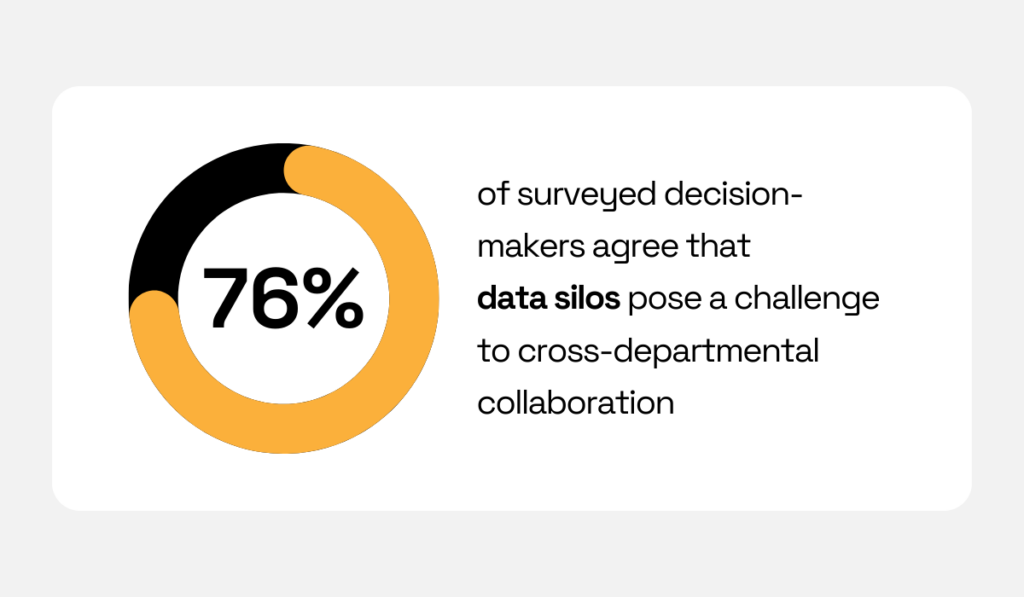
Illustration: Veridion / Data: XPLM
What’s even more worrying is that 42% of respondents believe that the number of data silos has increased in recent years.
The only way to break data silos and bring spend under management is to consolidate all spend data across departments.
Companies can then optimize the way they spend money going forward.
For many organizations, Excel spreadsheets are still a go-to spend management solution and a comfort zone for analysts.
Although it gets points for affordability and ease of use, Excel has plenty of limitations that become increasingly more difficult to overcome as your business grows.
Excel can’t handle data in thousands of rows nor guarantee security, and data inconsistency and formatting issues complicate the situation further.
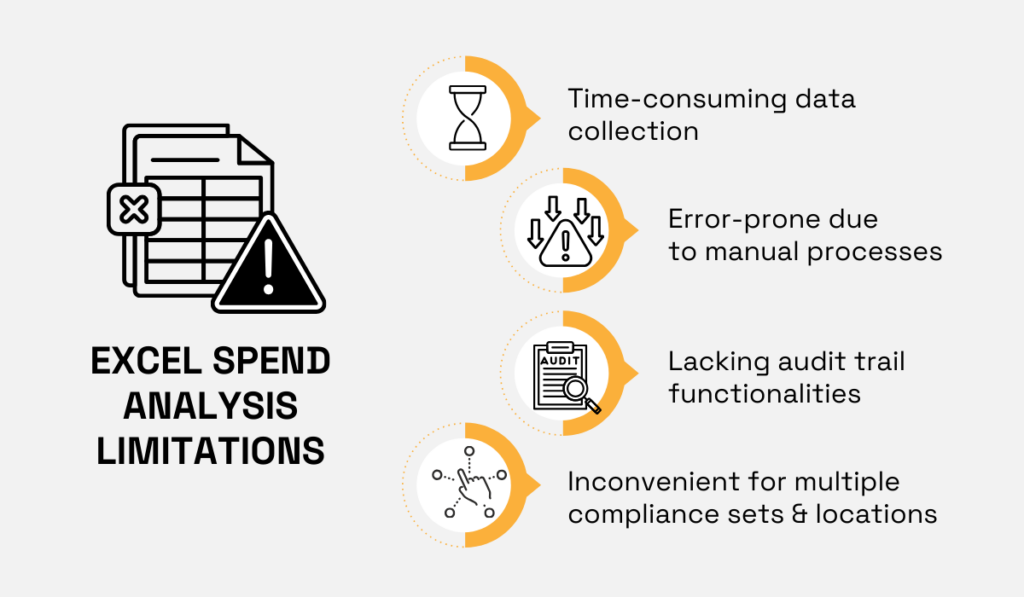
Source: Veridion
And to make matters worse, you still won’t be able to tackle typical data-related challenges, from time-consuming data integration to dealing with poor quality data.
The bottom line is that using Excel often means spending more time cleaning up your data than actually analyzing it and then getting results that you can’t trust 100%.
So, if you’re wondering what the actual solution for spend data consolidation is, look no further than spend management software.
Implementing a centralized spend management solution ensures seamless integration of data from all departments for better visibility and control.
There are well-known spend management solutions such as Coupa and SAP Ariba, as well as many alternatives for different business needs, but the key characteristics of this type of software include:
Combined, these capabilities ensure fast and precise spend data consolidation, making sure you have all the information you need at your fingertips.
To illustrate this, let’s take a look at the dashboard of Accelerated Insight, a procurement spend analysis solution.
You get key spend data at a glance in the section at the top of the screen, while the bottom part of the dashboard gives you a visual of the largest spend categories and easy access to granular data.
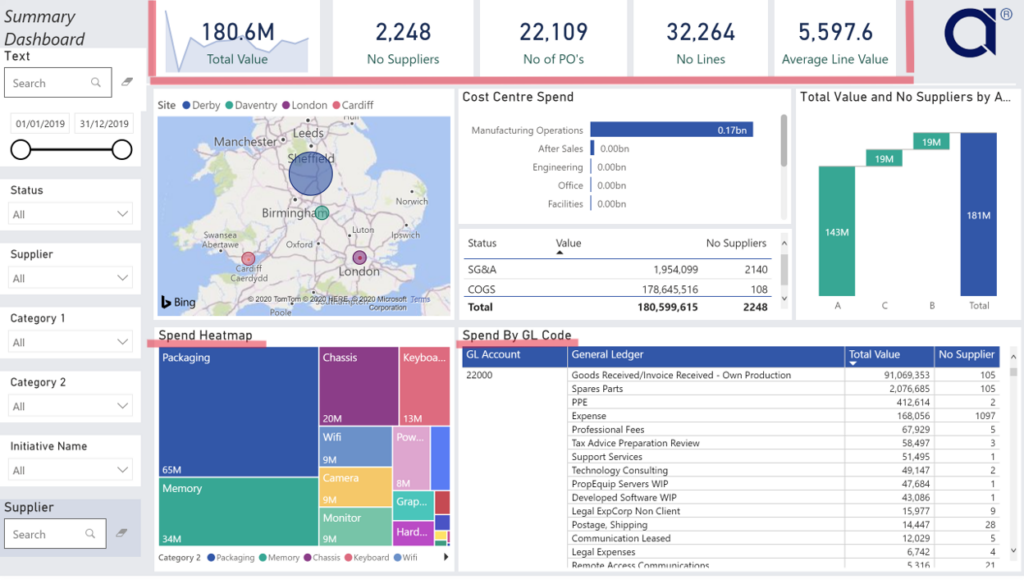
Source: Accelerated Insight
Both the summaries and detailed insights go beyond spend analysis, enabling you to assess opportunities, save costs, and make strategic decisions.
To sum up, achieving spend optimization begins when you have a single source of truth, and the quickest road to that is data consolidation, which is made easier using dedicated software.
You may be wasting time and money even when using software and data management tools, though.
That is why investing in modern procurement technologies is essential.
The reason is simple: if you rely mostly on manual workflows and use outdated software, you’re falling short of what’s possible.
This also explains why digital transformation is one of the trends shaping the procurement landscape.
According to PwC’s Digital Transformation Barometer survey, which tracks over 1,000 companies in nearly 60 countries, achieving a high digitization rate is among the top priorities in the coming years.
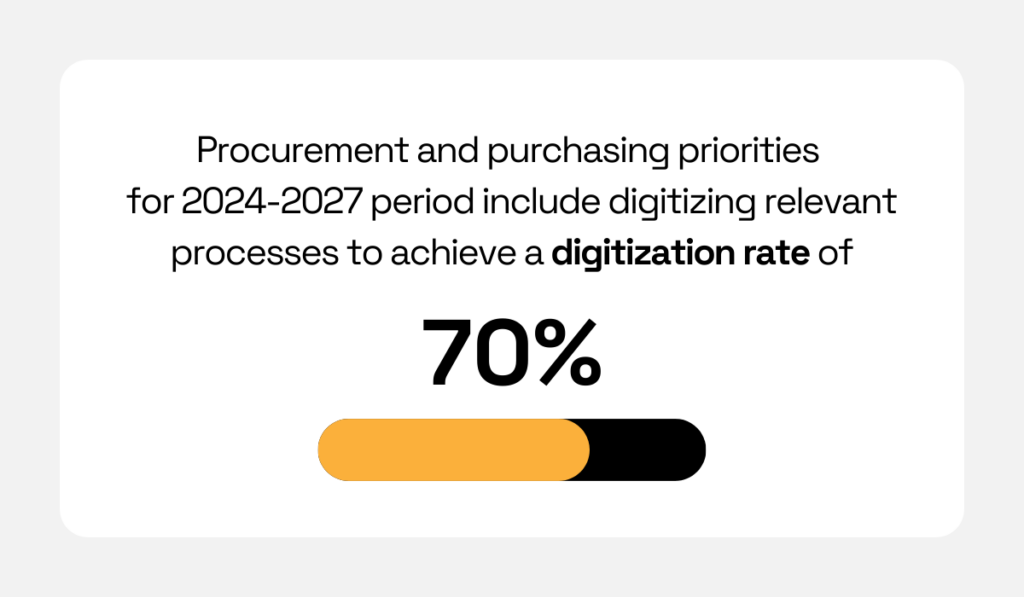
Illustration: Veridion / Data: PwC
But modern procurement technologies go beyond delivering a comprehensive spend analysis.
These solutions automate and streamline processes to reduce errors and improve efficiency, allowing procurement professionals to focus on more value-added tasks.
Depending on your needs, you can choose between different types of specialized solutions that target specific areas of procurement for maximum results, such as:
The overarching goal is to invest in technologies that will boost your procurement performance and help you optimize spend.
However, the price of such transformation can be quite high if it’s not done strategically.
Rujul Zaparde, the co-founder and CEO of one of the leading Intake-to-Pay solutions Zip, emphasizes that modernization efforts mustn’t come at the expense of existing processes.
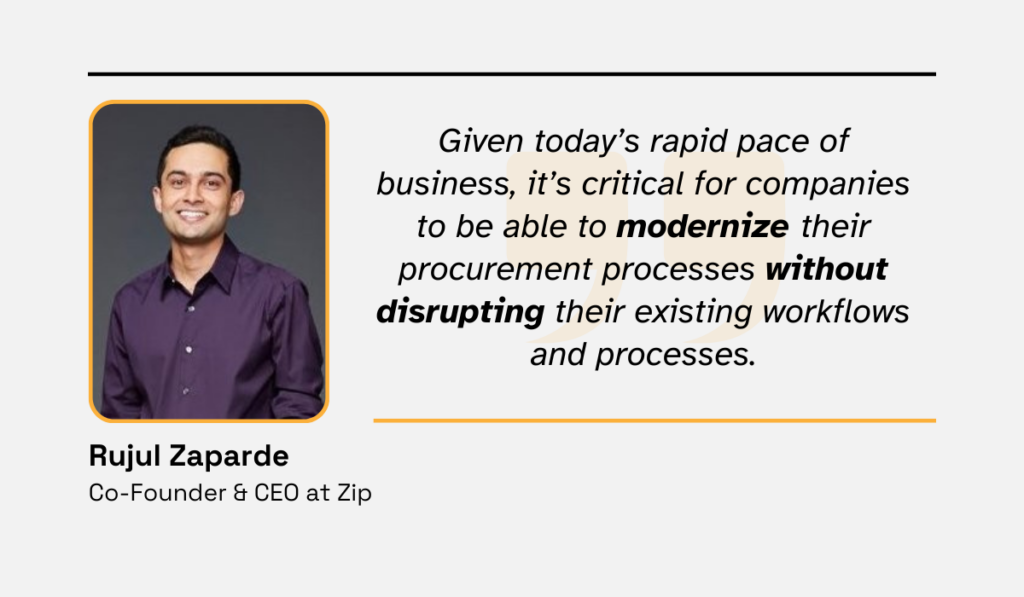
Illustration: Veridion / Quote: Forbes
E-procurement platforms and spend management tools that offer automation and robust data analytics are important, but their integration with existing systems is key to success.
Seamless integration was one of the priorities for a fintech startup Tymit, too.
The company needed a procurement solution to boost spend visibility and control, but in their search, they prioritized user-friendly solutions that fit with their accounting system and Slack.
Tymit found exactly what they were looking for by joining hands with Precoro, a cloud-based spend management platform, resulting in more streamlined procurement and accounting processes.
According to Tymit’s financial analyst, the tool condensed the month-end close process to a few days only, instead of two weeks.
But the advantages of modern procurement solutions go beyond increased efficiency.
Such tools also offer a range of capabilities to help you keep various processes in check and manage spend with more ease.
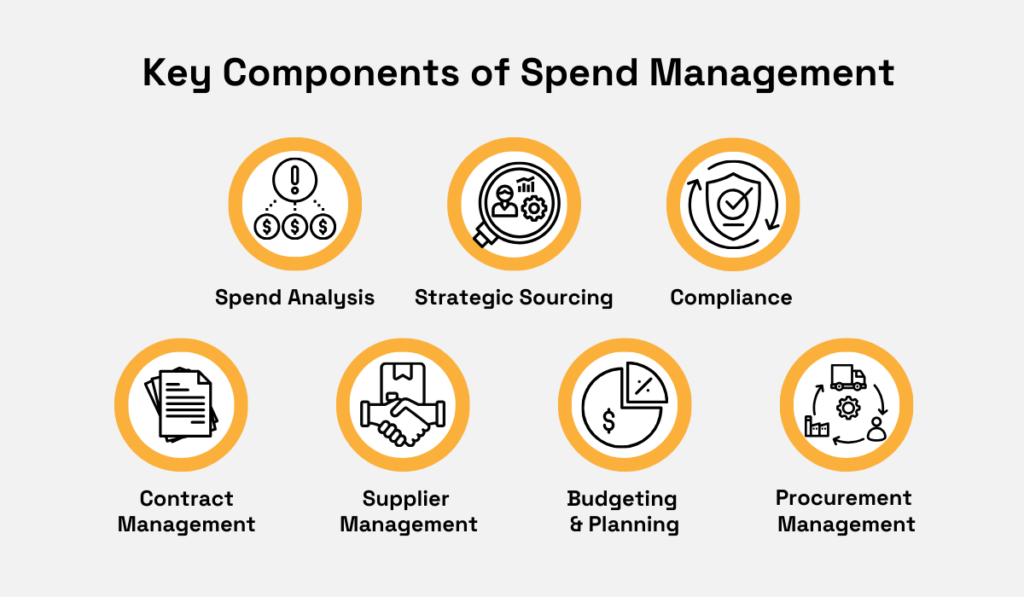
Source: Veridion
In the end, if you want to ensure better spend optimization and keep your competitive advantage, investing in modern procurement software solutions is no longer optional.
Our next spend optimization best practice requires you to focus on strategic sourcing and enhanced supplier discovery.
Procurement’s complexity means that many processes are time-consuming and resource-intensive.
However, manual supplier sourcing is particularly notorious for its length and drain on resources.
Based on the data from McKinsey, a single supplier search requires you to invest over 40 hours of work.
What’s worse, you put in all that effort for three months, and you’ll barely have broken through the surface of the supplier pool.
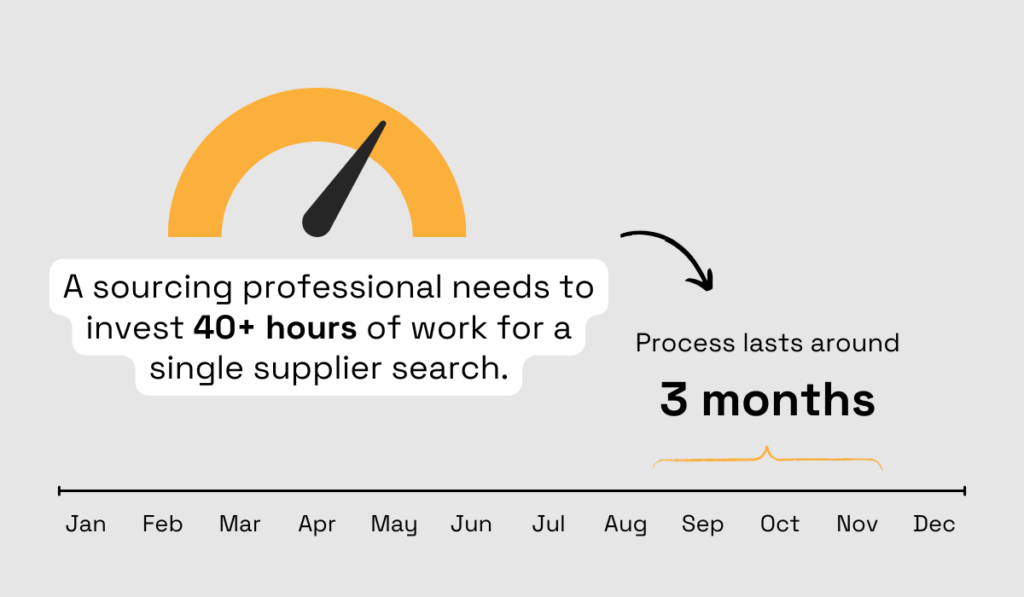
Illustration: Veridion / Data: McKinsey
However, the same research goes on to explain the benefits of looking for top-performing suppliers, despite the slow and resource-intensive process.
These include:
In a nutshell, strategic sourcing minimizes the costs and the risks in a proactive way, opening the doors to greater spend optimization.
Rajesh Kalidindi, the CEO of the strategic sourcing advisor LevaData, echoes this sentiment, urging for a proactive approach to sourcing and procurement as a way of maximizing profits.
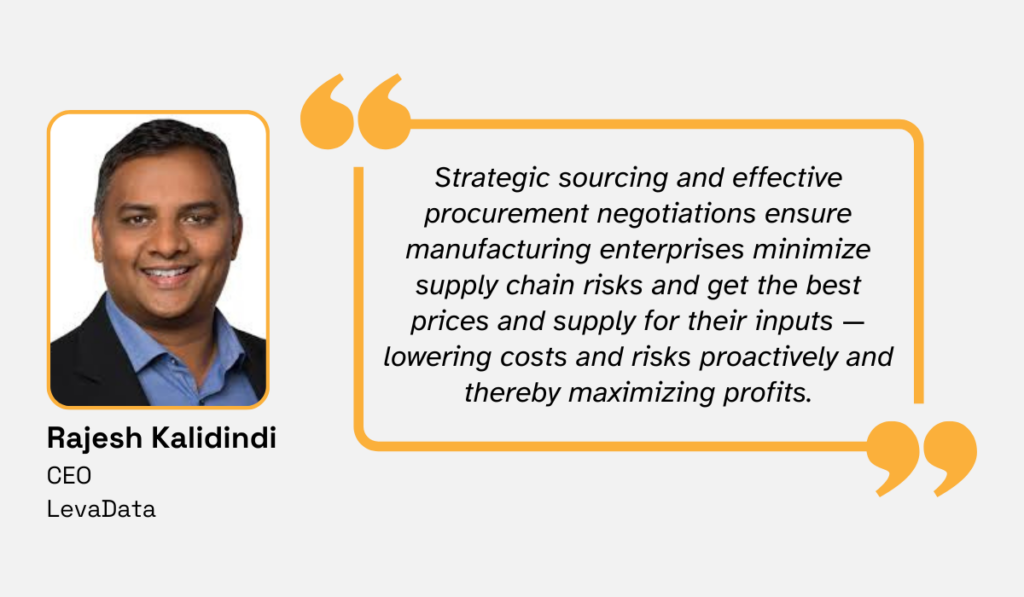
Illustration: Veridion / Quote: Supply Chain Brain
Alright, but what’s the key ingredient that makes sourcing strategic?
The truth is that sending database queries or searching through industry publications is now a relic of the past.
And it’s all thanks to artificial intelligence, or AI.
AI’s information synthesis capabilities make it uniquely suited for two major procurement activities: category strategy and supplier sourcing.
Generative AI enables you to get entire clusters of potential suppliers quickly, based on publicly available information and proven supplier sourcing criteria.
A McKinsey article illustrates how highly specific prompts, such as “suppliers for high-pressure injection molding based in Southeast Asia that are ISO 9002 certified’” deliver three times the results compared to traditional search engines.
However, robust AI-powered supplier sourcing tools, such as our Veridion, deliver even more through high-precision supplier discovery and monitoring.
What makes it such a powerful procurement tool is a wealth of fresh, weekly-updated data for supplier discovery.
With Veridion, you can quickly scour the entire globe for companies and products within a certain industry, and then zero in on ideal supplier profiles by using our Search API.
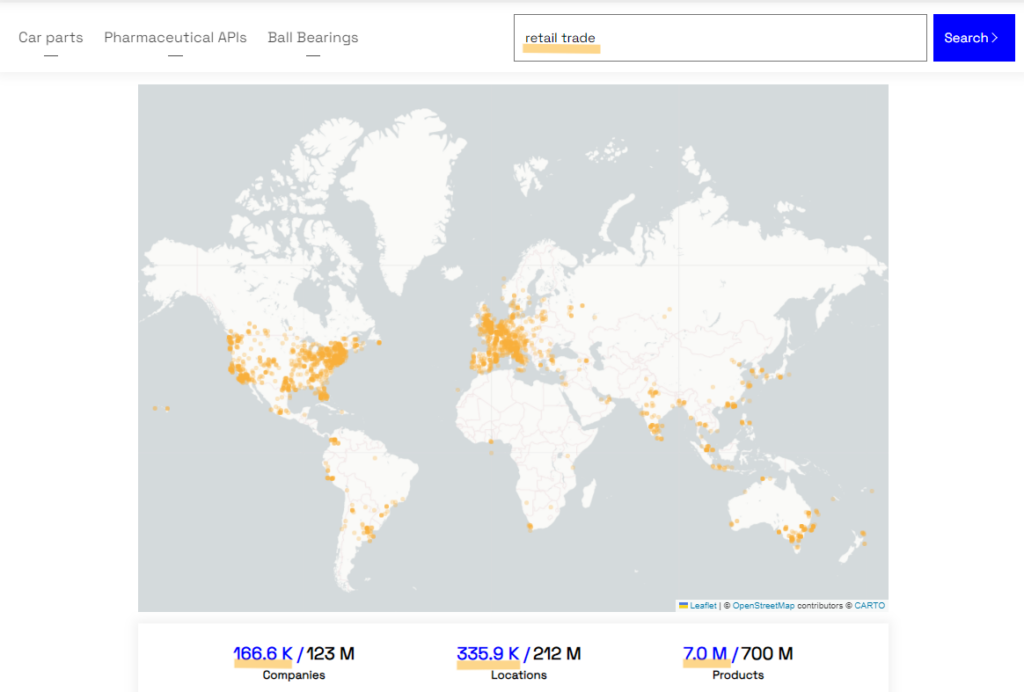
Source: Veridion
And the best part?
The AI algorithm is continuously learning, meaning that your spend management continues to improve alongside it.
There’s a striking difference between using Veridion and sticking to manual processes.
This gulf is most evident in the depth of coverage, efficiency, and reliability of data.
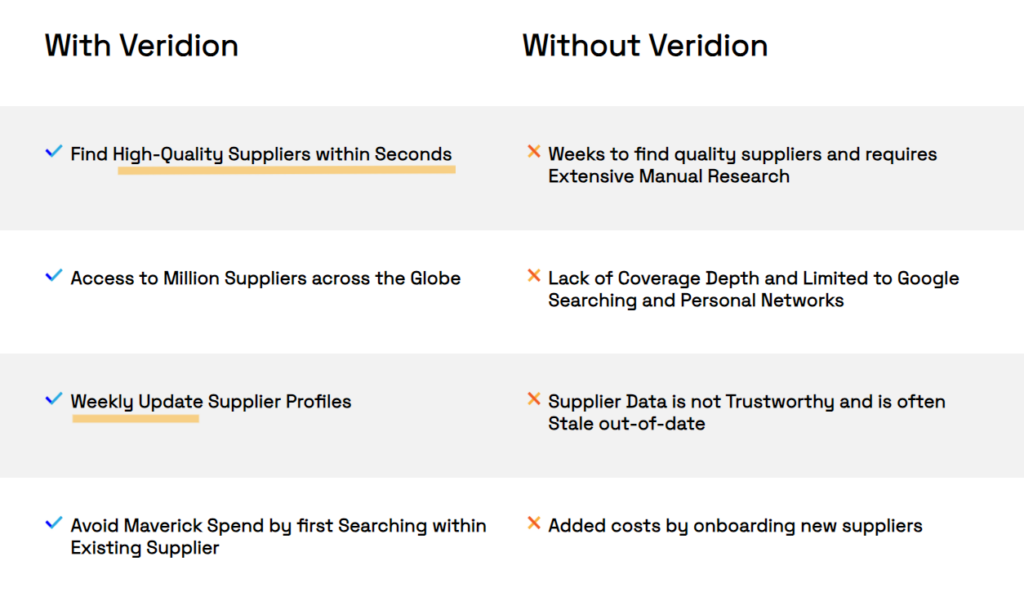
Source: Veridion
Veridion’s focus on providing real-time, in-depth data results in unmatched precision in selecting suppliers, and this strategic approach results in new opportunities for spend optimization.
Looking for spend optimization opportunities ensures efficient use of the organization’s resources, which helps you reduce unnecessary costs.
Of course, finding these opportunities, and making full use of them, is much trickier without data and regular spend analyses.
Nicolas Olague, General Manager at Amazon Business US, explains that knowing individual supplier spend is the quickest way toward identifying opportunities for improved cash flow or enhanced sustainability performance.
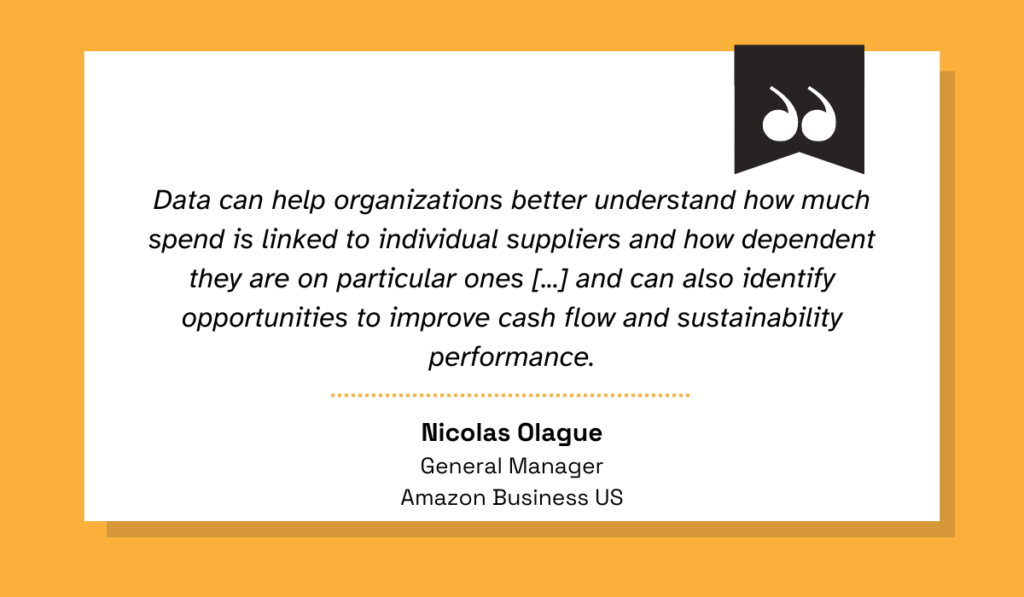
Illustration: Veridion / Quote: The Independent
Olague mentions that spend data reveals how dependent you are on particular suppliers, and delving deeper enables procurement professionals to look beyond the short-term.
For instance, if multiple suppliers are providing similar products or services, that kind of fragmented spend leads to procurement inefficiencies on a financial and operational level.
Plus, it usually suggests missed opportunities for better pricing through volume discounts.
Similarly, a closer look at the data is likely to uncover cases of maverick spend and other gaps in procurement policies that lead to increased financial risks.
The good news is, such issues can be minimized by implementing vendor consolidation practices.
And, according to the survey conducted by the business magazine CIO, cost-cutting is the second-most cited reason for vendor consolidation among IT executives.
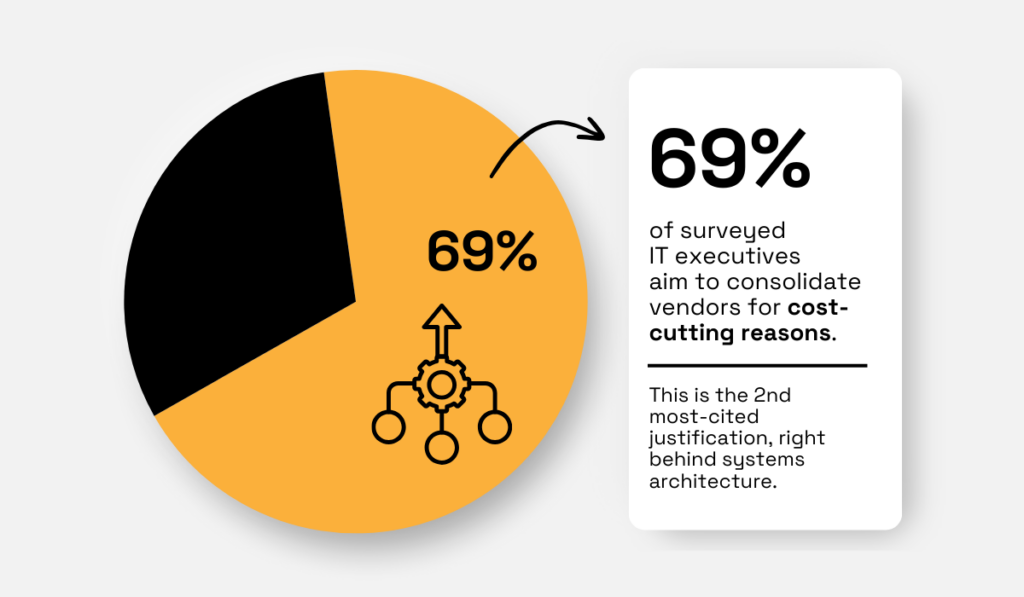
Illustration: Veridion / Data: CIO
Besides immediate financial improvements, the survey shows a strong preference for doing more long-term work with a few strategic partners.
The question is, how do you determine who these strategic partners are?
One course of action is using Gen AI, which promises a revolution in various contexts, from predictive analytics and supplier relationship management to sourcing and spend analysis.
Its ability to identify patterns and trends makes it invaluable for spend optimization efforts regardless of its primary application.
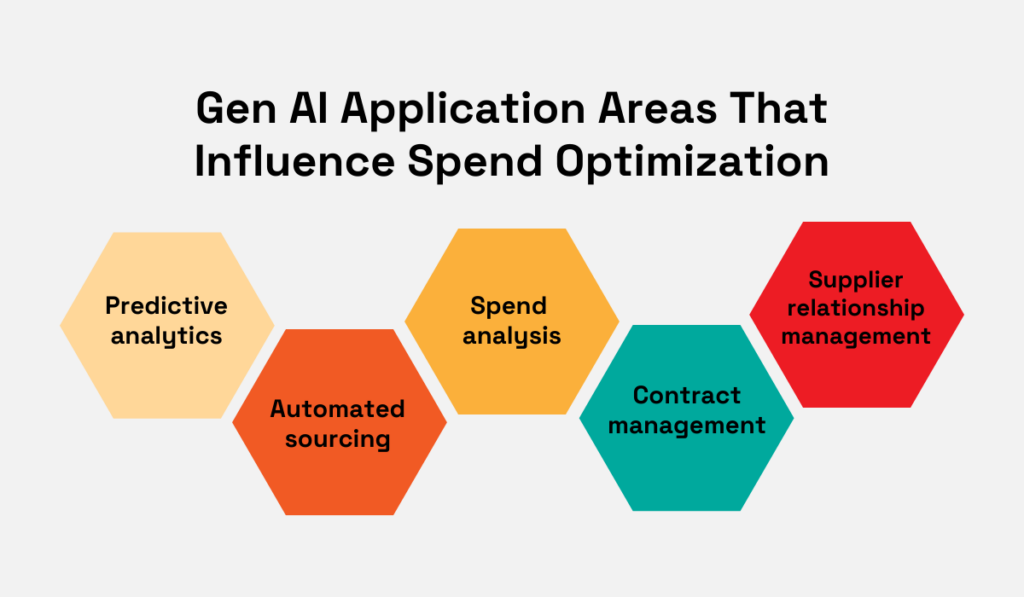
Illustration: Veridion / Source: Capgemini
Procurement professionals who leverage AI gain a strategic advantage that enables them to make informed decisions about spend and demand optimization and take their supplier management to the next level.
Besides generating supplier risk profiles and preparing negotiation scripts, AI can actually run robust, fact-based negotiations with suppliers.
It may still seem like a future in the making, but AI supplier chatbots have been up and running for a while, and one such example comes from Walmart.
Harvard Business Review’s article written in late 2022 elaborates on a pilot study in which 89 of Walmart’s tail-end suppliers agreed to negotiate with the Gen AI chatbot.
The AI chatbot successfully reached an agreement with 64% of the study participants, easily surpassing the 20% benchmark, and the average negotiation turnaround was just 11 days.
Remember that this was late 2022, meaning the chatbot’s role in Walmart’s procurement operations has yet to reach its full potential.
Improving spend optimization means looking for new opportunities—if you need help finding them, you can count on technology for assistance.
Effective procurement practices get you closer to optimizing spend at your organization.
And streamlined procedures, fresh data, strategic sourcing, and effective supplier management are essential for achieving this goal.
The one thing they have in common is procurement technology.
By making use of innovative tools and solutions, you’re tackling existing challenges, but also playing the long game.
Of course, no one says it’s easy.
It takes plenty of expertise, dedication, effort, and a little bit of luck to navigate the VUCA world, but it’s easier when you know which practices you can rely on.
Don’t worry, you’ve got this!